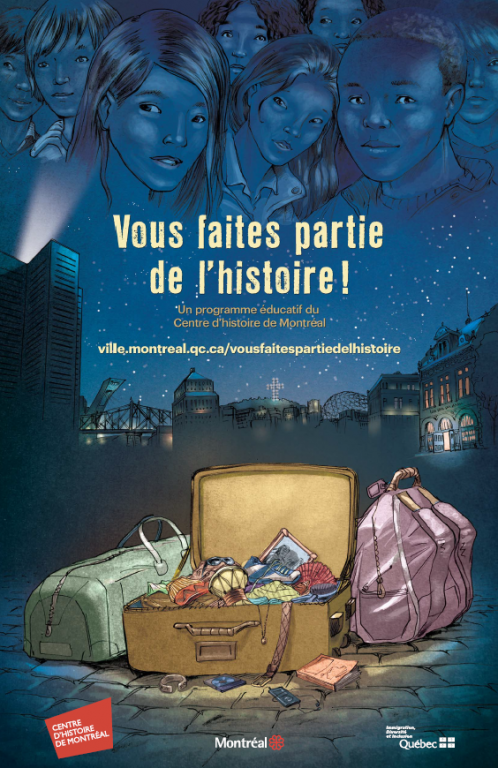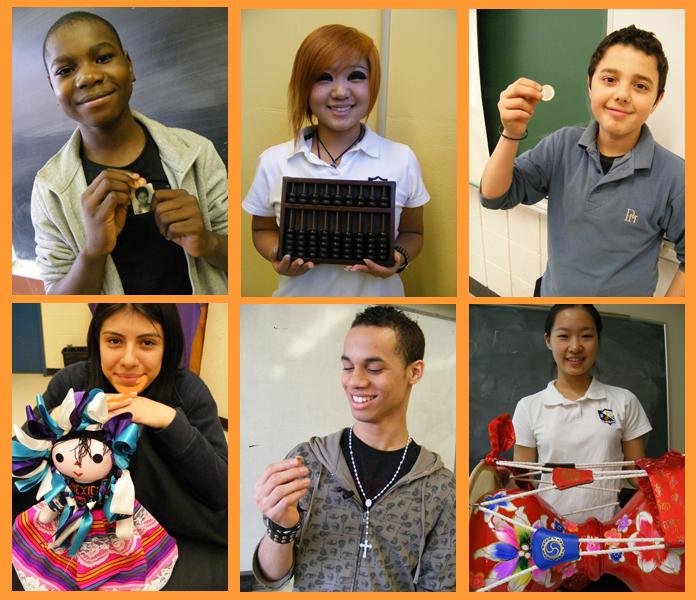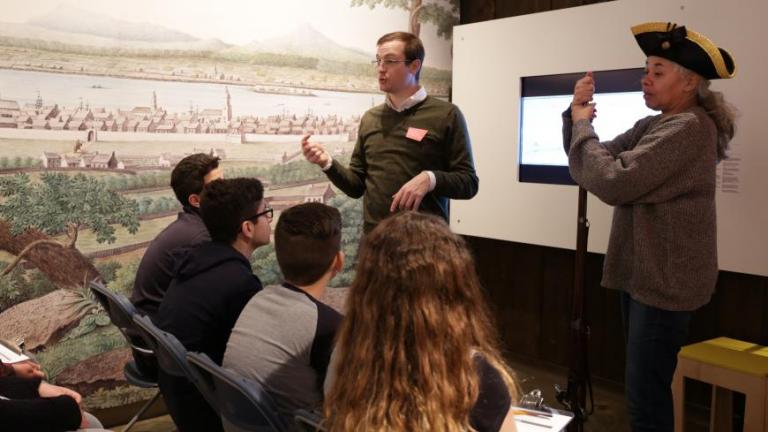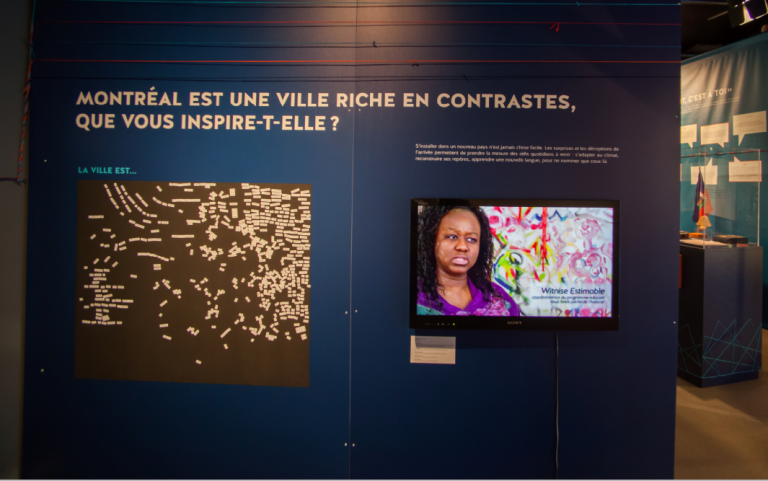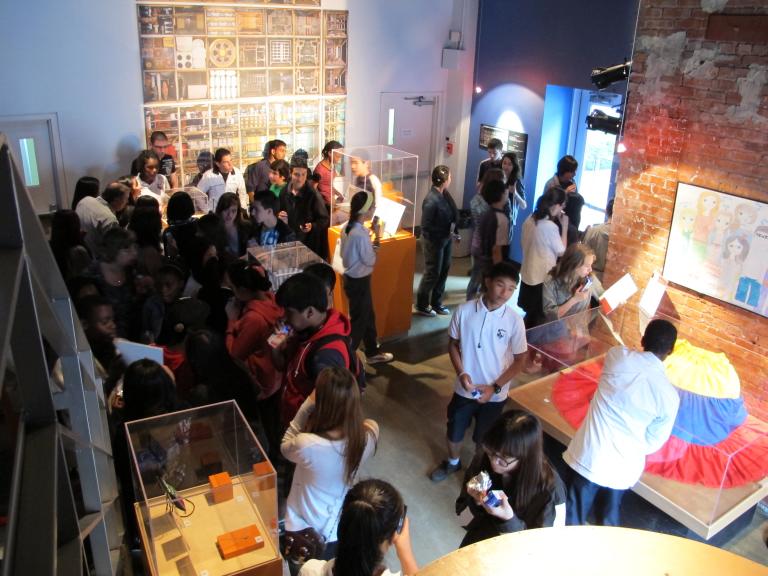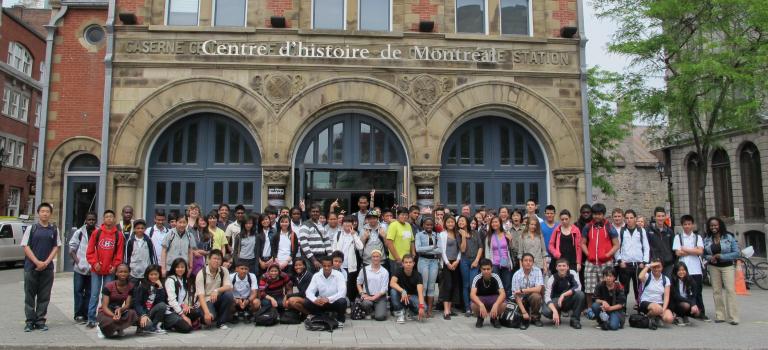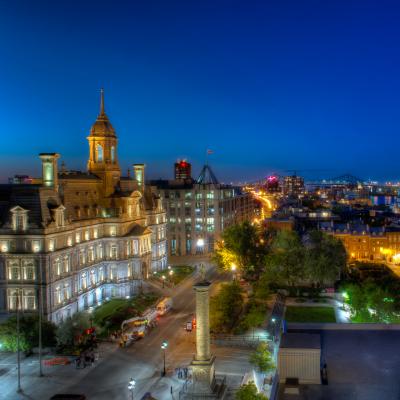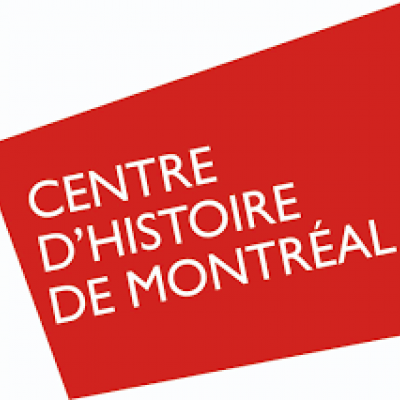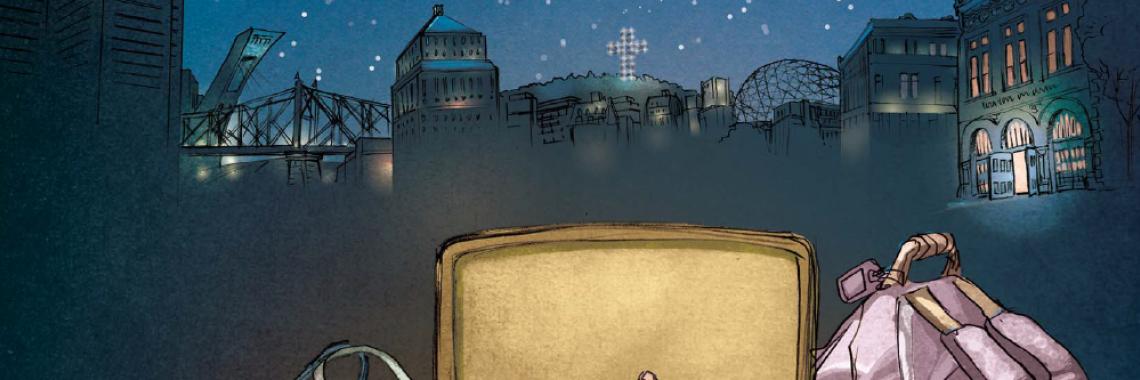
You Are part of History!
Context
The Centre d’histoire de Montréal’s educational program, titled “You Are Part of History,” is for secondary school orientation classes (intermediate or advanced).
Teens from all over the world have moved to Montréal, and they attend an orientation class to learn French before they integrate regular classes at their school. The CHM comes to see them in this orientation class.
For several weeks, students participate in a series of activities around the idea of heirlooms and family history, in the context of the history of their new city, they answer questions that museum staff ask them, visit the CHM with a guide and an actor or actress, and share a family heirloom with their schoolmates. Some even do it on camera! At the end of the project, their work is presented at the CHM and online.
This program is made possible by the Montréal cultural development agreement that was created with Québec’s Ministère de l’Immigration, de la Diversité et de l’Inclusion in 2006.
Mission
The objective is to introduce students to the history of Montréal, their adopted city, by telling them about the men, women and children who have come to Montréal from other countries since the 17th century, and emphasizing the importance of their own family heritage.
This approach aims to create a sense of belonging to Montréal’s cultural mosaic and empower newcomers to value their own family stories while developing their French-language skills.
Implementation
The program has three stages:
Stage 1: Traces of Montrealers
Students become familiar with what a history museum is. They discover the role of objects and testimonials in a museum like the Centre d’histoire de Montréal. The objective is to familiarize students with the Québec of today through its history, heritage and material/cultural traces that are still visible. The highlight of this stage is a day at the museum.
Stage 2: Family heirlooms
This is the essence of the You Are Part of History: the message that a family’s heirlooms play a major role in creating the history of their new community. Earlier exercises help students prepare. During this stage, they bring an heirloom from home and share its story with the class and the Centre d’histoire de Montréal.
Stage 3: Sharing students’ work in an exhibition and on the Web site
This stage promotes student’s work in different ways: individually by putting the story of their family heirloom online, or collectively with a class heirloom exhibition. The heirloom is voted on by students to represent them in an exhibition at the museum or another public cultural space. The exhibition’s opening is an opportunity for students to reconnect with the museum and see that they can share their story with all Montrealers.
Results
Since 2006, more than 4,000 students from all over Montréal and even the SouthShore have participated in the project. There are around 20 classes per year (with an average of 15 to 20 students per class) that attend each stage of the project. With the exception of transportation to the museum, the activity is free of charge for schools in all 19 of Monréal’s boroughs. The concept is also available for a fee to students outside Montréal’s city limits on the island of Montréal. Many classes on the island of Montréal have taken part.
The project’s Website presents texts, photos and videos from students going back to the 2011-2012 school year. There are 1,693 student files on the site. For the public at large, the site offers very moving stories from endearing teens looking to the future who defy clichés and give viewers the chance to connect with what the immigration experience shares with universal human experiences.
Intercultural relations
The activity creates intercultural bridges between students of very diverse backgrounds. The heirlooms are chosen by the group, which helps students transcend ethnic, national and religious biases. By choosing an heirloom that represents them all, they create a true heritage through a material and immaterial witness that society considers valuable for its identity and that it wants to preserve.
Intergenerational relations
Students teachers and families contribute to the quest for heirlooms, passing on personal, family and collective memory and heritage. In many cases, as shown by a preliminary analysis carried out in collaboration with the Laboratoire de recherche en relations interculturelles de l’Université de Montréal (LABRRI), families who leave for abroad often receive gifts that otherwise would have been given at other key life moments.
The research process brings young people into contact with their teachers and their family relationships, building intergenerational bridges at a time in their lives where their own search for identity is often unfavourable to bridge-building. Many students’ takeaway from the experience is the desire to leave heirlooms of their personal, family or cultural experience to their future children.
The host society
The activity facilitates the integration of newcomers into their new environment by showing the host society’s interest in their heritage and history, and sharing the message that, “You are now part of our history!”
Link top curriculum
The activity is linked to the curriculum of Québec schools, particularly the linguistic, school and social integration program.
Through its contacts with schools, the Centre d’histoire de Montréal noticed that orientation class, where newcomers spend a few months, did not have as many pedagogical materials. By creating the activity, the CHM also created attractive materials for professionals: a guide for teachers, activity sheets for students and the French-language newspaper "Traces. Lieux. Mémoires".
The CHM also created a living Website, increasing classes’ attractiveness to young people who want the latest technology. The CHM has fulfilled an urgent need and contributes proactively to the schools education/orientation mission. It supports teachers at a critical moment in young immigrants’ education, by showing them that they have a place in Montréal’s cultural mosaic while developing their French-language skills. This educational program has no equivalent in other Montréal museums.
The program won an award of excellence in education from the Canadian Museum Association in 2011 and received an honourable mention in the 2014 “Les Arts et la Ville” culture and development competition.
